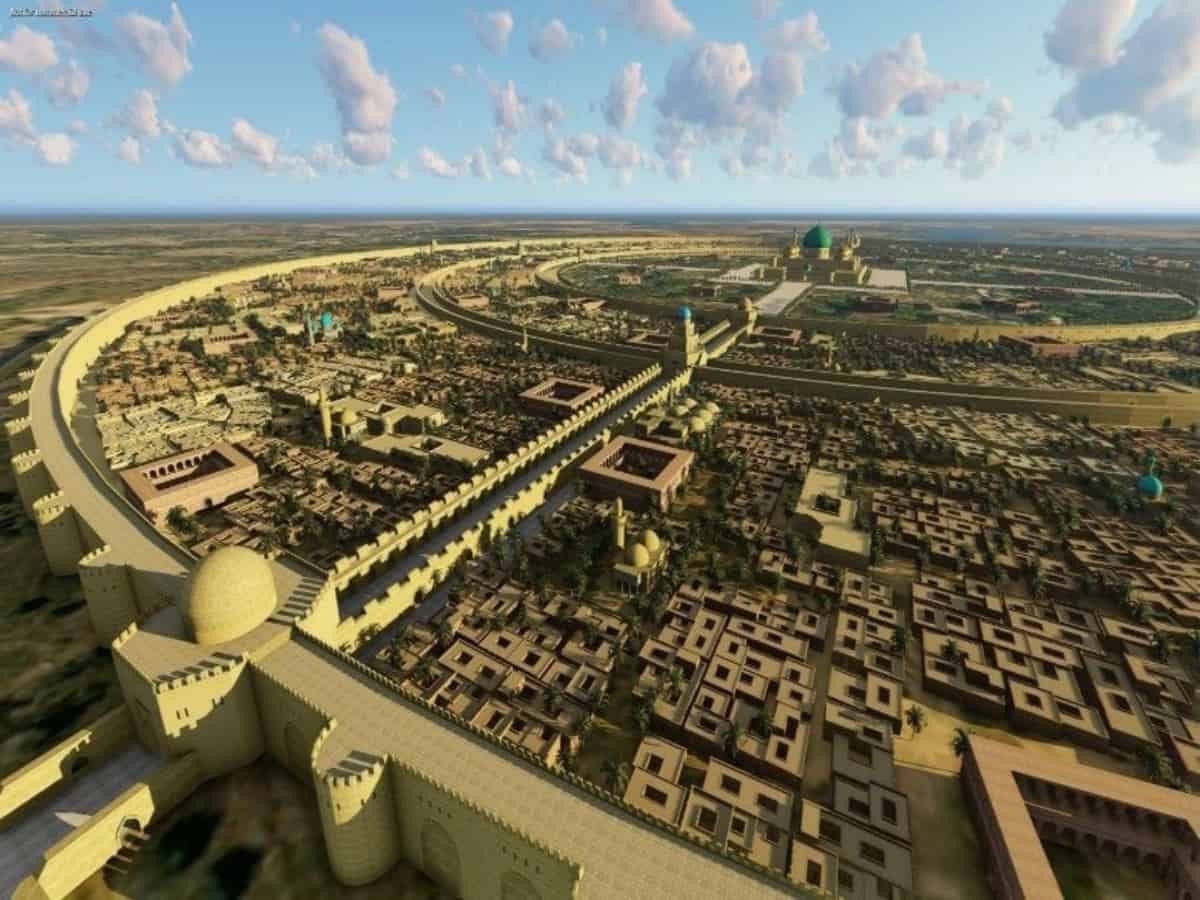On July 30, 762, Abbasid Caliph Al-Mansur founded the city of Baghdad, officially known as Madinat-Al-Salam (city of peace) on the western bank of Tigris.
Baghdad grew rapidly to become the largest urban center of the Medieval World, and became an economic and intellectual powerhouse. The city comprised a learning society benefiting from numerous bookshops and public libraries and became a hub for students traveling in search of knowledge.
11th century Khatib al-Baghdadi (literally means the lecturer from Baghdad) best described the sense of wonder surrounding the city when he said: “In the entire world, there has not been a city that could compare with Baghdad in size and splendor, or in the number of scholars and great personalities… Consider the numerous roads, markets, lanes, mosques, bathhouses, and shops- all these distinguish the city from all others.”
In its prime, the Abbasid city housed the world’s greatest academic institutions, including the famous House of Wisdom (Dar ul Hikmah), and earned a worldwide reputation of being the ‘Centre of learning’. The city also hosted a multiethnic and multi-religious environment.
The heart of the Abbasid capital was the ‘Round City’ which contained the palace, the main mosque, and some administrative buildings and quarters for troops. The palace and mosque were together in the middle of the central courtyard and the palace was surmounted by a green dome over the audience chamber.
The fall of Baghdad, 1258
In 1258, Baghdad was besieged by Ilkhanate Mongol troops and their allies, led by Hulagu Khan, the infamous Mongol commander. The siege lasted for 13 days from January 29th until February 10th. Although the then Caliph, Al-Musta’sim had failed to prepare for the invasion, he believed that Baghdad could not fall to invading troops and refused to surrender.
After that, the Mongols sacked Baghdad committing numerous atrocities, Hulagu Khan executed the Caliph and massacred the residents of the city, which was left greatly depopulated. According to most accounts, the caliph was killed by trampling. The Mongols rolled the caliph up in a rug, and rode their horses over him, as they believed that the earth would be offended if it were touched by royal blood.
The invasion is considered to mark the end of the Islamic Golden Age, during which the Caliphs had extended their rule from the Iberian Peninsula to Sindh, and which was also marked by many cultural achievements in diverse fields.
Contemporary accounts state that Mongol soldiers looted and then destroyed mosques, palaces, libraries, and hospitals. Priceless books from Baghdad’s thirty-six public libraries were torn apart, the looters using their leather covers as sandals. Grand buildings that had been the work of generations were burned down to the ground.
The famous House of Wisdom containing countless precious historical documents and books on subjects ranging from medicine to astronomy was burnt down.
Historians have claimed that the Tigris River ran red from the blood of the scientists and philosophers that were killed. James Raven, in the introduction of his book ‘The Resonances of Loss, in Lost Libraries’, talks about the destruction of the books, tossed into the Tigris such that the water turned black from the ink.
Citizens attempted to flee but were intercepted by Mongol soldiers who killed in abundance, sparing no one, not even children. Martin Sicker writes that close to 90,000 people may have been killed, other estimates go much higher.
The Caliph Al-Musta’sim was captured and forced to watch as his citizens were murdered and his treasury plundered. Hulagu Khan had to move his camp upwind of the city, due to the stench of decay from the ruined city.
American Invasion of 2003
As part of George W. Bush’s ‘War on Terror’ and ‘invasion of Iraq,’ the United States of America started bombing Baghdad on March 19, 2003, in an unsuccessful attempt to kill the then-dictator of Iraq, Saddam Hussein.
Attacks continued against a small number of targets until March 21, 2003, when the main bombing campaign started of the US and its allies began. Its forces launched approximately 1700 air sorties, 504 using cruise missiles.
Baghdad suffered serious damage to its civilian infrastructure, economy, and cultural inheritance from the fighting, as well as looting and arson.

